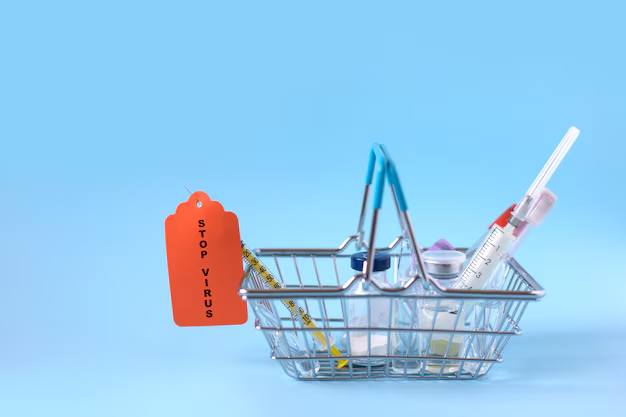Understanding FSA Eligibility: What Items Can You Purchase with Your Flexible Spending Account?
Navigating the ins and outs of health-related expenses can be daunting, especially when it comes to understanding what your Flexible Spending Account (FSA) covers. If you're aiming to maximize your healthcare spending while minimizing out-of-pocket costs, knowing which items are eligible for FSA reimbursement can be a game-changer. This comprehensive guide will walk you through everything you need to know about FSA-eligible items, their relationship with Health Savings Accounts (HSAs), and how to make the most of these financial tools.
What is an FSA and How Does it Work?
Flexible Spending Accounts (FSAs) are special accounts you can use to set aside pre-tax dollars for eligible healthcare expenses. Offered through employers, these accounts can significantly lower your taxable income while providing a cushion for outplacement medical expenses throughout the year.
Key Features of FSAs:
- Pre-tax Contributions: Contributions are deducted from your paycheck before taxes, reducing your taxable income.
- Annual Limitation: Generally, you can contribute up to a certain limit each year as set by the IRS.
- Use-It-or-Lose-It Rule: Funds must typically be used within the plan year, although some plans offer a grace period or $500 carryover option.
- Qualified Expenses: Must be used for healthcare items and services that meet eligibility criteria.
What Items Are Eligible for FSA Reimbursement?
The eligibility of items for FSA reimbursement is defined by IRS guidelines. Eligible expenses typically include items or services that diagnose, cure, mitigate, treat, or prevent disease.
Common FSA-Eligible Expenses:
- Prescription Medications: Any prescribed drug or medication.
- Over-the-Counter (OTC) Medications: Many non-prescription drugs are eligible, including pain relievers, allergy medications, and cold treatments.
- Medical Devices: Includes items like blood pressure monitors, thermometers, and glucometers.
- Contact Lenses and Eyeglasses: Costs associated with purchasing these items are FSA-eligible.
- Mental Health Services: Therapy sessions and psychology consultations may qualify.
- Dental Care: Includes exams, cleanings, fillings, and orthodontics.
- Feminine Hygiene Products: These, too, are covered under the Coronavirus Aid, Relief, and Economic Security (CARES) Act.
📝 Tip: Always keep receipts and documentation as proof of purchase for eligible expenses, in case the IRS requires substantiation.
Overlooked Yet Eligible FSA Expenses
There are several under-the-radar FSA-eligible items that many people overlook. Buying these items through your FSA can save you money without noticeable lifestyle changes.
Surprising FSA-Eligible Items:
- Sunscreen with SPF 15 or higher: Protecting your skin can be both health-smart and cost-effective.
- First Aid Kits: A complete necessity in every household.
- Acupuncture: An increasingly popular alternative therapy.
- Chiropractic Care: Provides relief for back pain and other ailments.
- Prenatal Vitamins: Essential for expecting mothers.
With these diverse options, the list of eligible items ensures a wide raft of potential expenditures that you can cover with your FSA.
Related Financial Tools: How Do FSAs Compare to HSAs?
While both FSAs and Health Savings Accounts (HSAs) serve similar purposes, there are significant differences between them. Understanding these distinctions can help you choose which works best for you, or how to use both if possible.
FSAs vs. HSAs: Key Differences
- Eligibility: FSAs are only available through employer-sponsored health insurance plans, whereas anyone with a high-deductible health plan (HDHP) can open an HSA.
- Funds Rollover: HSA funds roll over year-to-year, whereas FSAs usually adhere to a “use-it-or-lose-it” policy, except where specified.
- Contribution Limits: Both accounts have yearly limits set by IRS, but HSAs generally allow for higher contributions.
- Portability: HSAs are owned by the individual and portable if they change jobs; FSAs remain tied to employment.
Maximizing Your FSA Dollars: Strategies to Consider
To make the most of your FSA contributions, having a strategic approach is essential. By carefully planning your healthcare spending, you can ensure you’re getting the most value.
Harnessing the Power of FSAs:
- Plan Ahead: At the beginning of the year, estimate your healthcare needs and budget accordingly.
- Track Expenses: Use FSA management apps to keep track of your spending and remaining balance.
- Stay Informed: Rules and eligible items can change, so be sure to check in periodically with IRS guidelines for any updates.
- Year-End Spending Blitz: As year-end approaches, plan to exhaust your FSA funds on eligible expenses to avoid losing them.
Summary: Make Every FSA Dollar Count 🌟
Here's a quick rundown of key takeaways for optimizing your FSA experience:
- ✅ Plan and Budget: Estimating your annual expenses at the year’s start can help maximize FSA savings.
- ✅ Utilize Receipts: Always keep receipts and documents for substantiating claims.
- ✅ Explore All Options: Familiarize yourself with both typical and lesser-known eligible items.
- ✅ Stay Updated: IRS guidelines may adjust what is considered eligible, so ensure you have the most current information.
- ✅ Use All Funds: Time your purchases towards the year's end to avoid the “use-it-or-lose-it” impact.
Effective use of an FSA can significantly ease financial burdens associated with healthcare costs, all while reducing taxable income. By knowing what’s available within your plan, you can make the best financial decisions for yourself and your family.

Related Topics
- Are Cough Drops Hsa Eligible
- Are Diapers Hsa Eligible
- Are Electric Toothbrushes Hsa Eligible
- Are Fsa Contributions Tax Deductible
- Are Gym Memberships Hsa Eligible
- Are Health Savings Accounts Worth It
- Are Hsa Contributions Pre Tax
- Are Hsa Contributions Tax Deductible
- Are Hsa Distributions Taxable
- Are Supplements Hsa Eligible